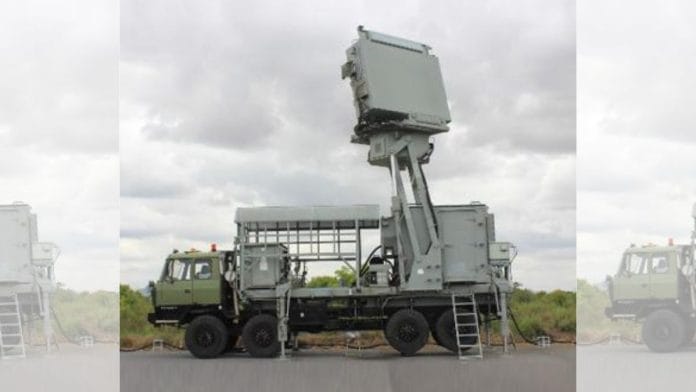New Delhi: An indigenous Low-level Transportable Radar (LLTR) is set to enhance India’s air defence capabilities by providing advanced surveillance and tracking of low-altitude air targets.
The Ministry of Defence Wednesday inked a Rs 2,906 crore capital acquisition contract with Bharat Electronics Limited (BEL) for LLTR ‘Ashwini’ for the Indian Air Force (IAF).
The radar, designed and developed by Electronics & Radar Development Establishment (LRDE) of the Defence Research and Development Organisation (DRDO), will aid in airspace surveillance by detecting and tracking various air targets, including fighter aircraft, helicopters and unmanned aerial vehicles (UAVs), at low altitudes.
‘Ashwini’ is an active electronically scanned phased array radar. Its mobility and portability will make it an essential asset for military operations. The acquisition is set to “significantly enhance the operational preparedness” of the IAF, especially with respect to countering low-level intrusions such as from across the border.
Sources in the IAF told ThePrint that these are mostly early warning radars with a range of 200 km for picking up low-level targets. ‘Ashwini’ will be used as a plug-in solution for addressing gaps in the early warning capability of the IAF. The feed obtained by the system will go to the Integrated Air Command and Control System (IACCS), and be augmented wherever needed. It will also increase or enhance the surveillance in the desired area.
According to the ministry, it is a major step towards achieving self-reliance in defence manufacturing by reducing dependency on foreign Original Equipment Manufacturers (OEMs).
Not only does this technology allow advanced detection capabilities in hostile electronic warfare environments, it is also designed to be easily transportable for quick deployment in different terrains and operational environments.
Also Read: Inducted in 1980s, India’s T-72 tanks to get power boost after eastern Ladakh experience
Key features
The ‘Ashwini’ radar is built with several key technologies, including Rotating Active Phased Array, time synchronisation of multiple receivers, 2D digital beam-forming, digital beamforming-based (DBF) active array calibration, multi-beam processing, critical real-time software and firmware, and mechanical packaging (engineering, thermal, etc). These will be used for all future similar radar projects by LRDE.
According to the DRDO, the LLTR indigenous rotating active phased array multi-function 4D radar is capable of automatic detection and tracking of aerial targets ranging from fighter aircraft to slow-moving targets.
The system has a range of 200 km, and can detect two square metres of Radar Cross Section (RCS) targets as far as 150 km in range, with an altitude coverage from 30 metres to 15 km.
The radar operates in staring or rotation mode.
In the rotation mode, it offers continuous full 360-degree horizontal coverage, but with a narrower vertical scan of 40 degrees. In staring mode, it offers a fixed horizontal scan and the same 40-degree vertical scan. This means that the radar antenna is fixed and continuously points at a specific target or area.
Furthermore, the desired coverage is obtained using a wide transmit beam and multiple receive beams.
(Edited by Mannat Chugh)
Also Read: All about OBOGS, a life support system for IAF pilots that has cleared DRDO’s high altitude tests






